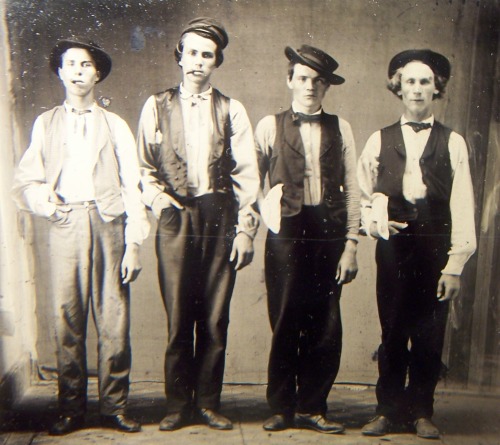
Watching as the world turns
Carolina Naturally is read in 191 countries around the world daily.
Remember ... Only YOU can prevent forest fires!
Today is Donald Duck Day
Don't forget to visit our sister blog!

| 483 | St. Felix begins his reign as catholic Pope. | |
| 607 | The 12th recorded passage of Halley's Comet occurs. | |
| 1519 | Hernando Cortez lands in what will become Mexico. | |
| 1660 | A statute is passed limiting the sale of slaves in the colony of Virginia. | |
| 1777 | Congress orders its European envoys to appeal to high-ranking foreign officers to send troops to reinforce the American army. | |
| 1781 | Astronomer William Herschel discovers the planet Uranus, which he names 'Georgium Sidus,' in honor of King George III. | |
| 1793 | Eli Whitney patents the cotton gin. | |
| 1861 | Jefferson Davis signs a bill authorizing slaves to be used as soldiers for the Confederacy. | |
| 1868 | The U.S. Senate begins the impeachment trial of President Andrew Johnson. | |
| 1881 | Czar Alexander II is assassinated when a bomb is thrown at him near his palace. | |
| 1915 | The Germans repel a British Expeditionary Force attack at the battle of Neuve Chapelle in France. | |
| 1918 | Women are scheduled to march in the St. Patrick's Day Parade in New York due to a shortage of men. | |
| 1935 | A three-thousand-year-old archive is found in Jerusalem confirming biblical history. | |
| 1940 | Finland capitulates conditionally to Soviet terms, but maintains its independence. | |
| 1941 | Hitler issues an edict calling for an invasion of the Soviet Union. | |
| 1942 | Julia Flikke of the Nurse Corps becomes the first woman colonel in the U.S. Army. | |
| 1943 | Japanese forces end their attack on the American troops on Hill 700 in Bougainville. | |
| 1951 | Israel demands $1.5 billion in German reparations for the cost of caring for war refugees. | |
| 1957 | The FBI arrests Jimmy Hoffa on bribery charges. | |
| 1963 | China invites Soviet Premiere Nikita Khrushchev to visit Beijing. | |
| 1970 | Cambodia orders Hanoi and Viet Cong troops to get out. | |
| 1974 | The U.S. Senate votes 54-33 to restore the death penalty. | |
| 1974 | Arab nations decide to end the oil embargo on the United States. | |
| 1981 | The United States plans to send 15 Green Berets to El Salvador as military advisors. | |
| 1985 | Upon the death of Konstantin Chernenko, Mikhail Gorbachev becomes the new leader of the Soviet Union. | |
| 1991 | Exxon pays $1 billion in fines and costs for the clean-up of the Alaskan oil spill. |
 Are these just unhealthy obsessions with death and decay? To Clemson
University professor Sarah Lauro, the phenomenon isn't harmful or a
random fad, but part of a historical trend that mirrors a level of
cultural dissatisfaction and economic upheaval.
Are these just unhealthy obsessions with death and decay? To Clemson
University professor Sarah Lauro, the phenomenon isn't harmful or a
random fad, but part of a historical trend that mirrors a level of
cultural dissatisfaction and economic upheaval. Pagans/Wiccans Face Alot of Discrimination over the years
Pagans/Wiccans Face Alot of Discrimination over the years

Fresh from a two-day weekend visit to Iraq, the bush administration's top health-care official defended the $950 million that will be spent to help Iraq establish universal health care. Congressional Democrats have criticized the administration for helping Iraq to establish universal health care without doing the same for u.s. citizens - More

“I hate mandates as much as anyone, but some concerns and conditions rise to the level of needing a mandate.”Besides, the NRA is willing to fund school programs to teach kids how to use a gun. Granted, the NRA isn’t willing to fund the mandatory training for teachers (also proposed in Brown’s law.) Since forcing teachers to take gun training is much more important than books, or school lunch programs, Republicans will find a way to pay for this all important mandate.

RYAN LIZZA, CNN CONTRIBUTOR: I think it’s fine as a statement of priorities for Republicans to say we disagree with Obamacare and our budget repeals it. I think that’s reasonable. Did you vote against the fiscal cliff deal?Ryan’s budget assumes the repeal of Obamacare, but includes the additional $600 billion in revenue that will be generated by the fiscal cliff deal. When asked why they are using a tax hike on the wealthy that they fought against for nearly two years to their own advantage, Chaffetz was at a loss for words.
CHAFFETZ: Yes, I did.
LIZZA: Is this budget going to assume the $600 billion in new revenues in that fiscal cliff deal?
CHAFFETZ: Well, we haven’t gotten to the final product. Paul has not yet released it. The Budget Committee – well, it potentially will.
LIZZA: It potentially would?
CHAFFETZ: Well, I want to look at it, in totality. When you do a budget, I’m not trying to punt, I’m trying to say you have to look at all of the things – I was a kicker in college. But look, at the end of the day you’ve got to put numbers on a piece of paper and achieve balance. So I think there’s a mix there -
LIZZA: Speaking to America’s frustration, Republicans voted overwhelmingly against a deal that raised $600 billion in revenue, and now it sounds like they’re going to put out a budget that pockets that $600 billion and put that up for a vote. So I think that paradox is – is a little difficult to understand.
CHAFFETZ: We have won some things and we’ve lost a lot of things, OK


like torture, rape is used for such purposes as intimidation, degradation, humiliation, discrimination, punishment, control or destruction of the person.” Like torture, rape is a violation of personal dignity, and … in fact constitutes torture when it is inflicted by or at the instigation of or with the consent or acquiescence of a public official or other person acting in an official capacity.I realize that we are not literally at war. My point is that war illustrates the true nature of rape. It’s a crime that is about disempowering a woman or punishing her for having the audacity to believe she has a right to personal autonomy.
 You all remember the Manti Te'o story, right? Of course you do. We
all remember because we all thought the story of a college football star
falling in love with a girl online, only to be duped into thinking she
died and then finding out she wasn't real in the first place, was
ludicrous.
You all remember the Manti Te'o story, right? Of course you do. We
all remember because we all thought the story of a college football star
falling in love with a girl online, only to be duped into thinking she
died and then finding out she wasn't real in the first place, was
ludicrous. 

It towers above the surrounding buildings, more than double the height of its neighbors. In fact, there’s only one structure on Earth taller: Dubai’s Burj Khalifa. Completed on February 29, 2012 and opened to the public in May that year, the Tokyo Skytree broadcasting tower soars 2,080 feet (634 meters) into the sky, with the top sometimes obscured by clouds. Although it misses out on being the tallest structure in the world, the Tokyo Skytree can take comfort in the fact that it is the world’s tallest tower.Get a closeup look at this wonder of the modern world at Tech Graffiti.

Don’t these people realize that they’re wasting your time?
Of course, some people might think me the rude one for not appreciating life’s little courtesies. But many social norms just don’t make sense to people drowning in digital communication.
Take the “thank you” message. Daniel Post Senning, a great-great-grandson of Emily Post and a co-author of the 18th edition of “Emily Post’s Etiquette,” asked: “At what point does appreciation and showing appreciation outweigh the cost?”
That said, he added, “it gives the impression that digital natives can’t be bothered to nurture relationships, and there’s balance to be found.”

A photo believed to be Billy the kid, Doc Holliday, Jesse James & Charlie Bowdre, possibly Mexico, ca. 1879





Why lightning occurs even in common thunderstorms remains a topic of research, and the cause of volcanic lightning is even less clear. Surely, lightning bolts help quench areas of opposite but separated electric charges. One hypothesis holds that catapulting magma bubbles or volcanic ash are themselves electrically charged, and by their motion create these separated areas. Other volcanic lightning episodes may be facilitated by charge-inducing collisions in volcanic dust.




